Lynette Wallworth
Samstag Museum of Art, University of South Australia, Adelaide
19 February – 24 April 2009
Her work has often been commissioned for specific events and generally seen singly and so this substantial showing at the Samstag offers an unprecedented navigation through her work and one where its overarching lines can be traced out. Entering Duality of Light is akin to entering a low level force field with shut off dark spaces, rooms requiring permission to enter and video screens against the walls of the dimmed gallery like magnetic portals. A tamped down energy suffuses the space and there is a sense of dynamic systems and fluid energies, like idle machines waiting to be activated. An architecture of fields and zones is sketched out and it becomes apparent that what has been made here is a temple complex of a kind, an integrated environment devoted to sensation, experience and reflection.
This feeling that what we are dealing with here is flows and forces is evident in the slow rhythms of Damavand Mountain with its three screens that throw out a hypnotic energy as they cycle slowly through scenes of clouds moving across the mountain face, the budding and flowering of a scarlet poppy and a woman, the wind constantly reshaping her chador as she moves closer to the camera and the observer. These multiple times, the stillness of the mountain, the ethereality of the poppy and the woman, interweave with a slow musicality, each leaving a shadow of itself as it fades. The images meld and move, the freeze fade technique lending each a sculptural weight and what emerges is a sense of place and endurance, difference and unity that persists as sense memory.
As the multiple times of Damavand Mountain deepen its pull, it is the elongated time of Beautiful Sunset hovering on the edge of perceptibility that draws us in and lets us fall into a contemplative state, for light, time and perception are the manipulable stuff of her work. Light is lens, medium and metaphor, seeming to flow through different states as it illumes, shatters and moves, its mutability bringing into sharp focus perception’s unreliability. Other dualities run alongside this inherent duality of light; self and other, nature and world, what we think we know and what is. These oppositions are what she aims to puncture, to dissolve and collapse. Media and matter are inseparable in this other enquiry into the nature of perception and it is precisely at that fluid and changeable space at the interface of perception and experience in which she works.
These works are in themselves entire systems of forces and energies and remembering that comprehend means to integrate, to grasp and include, these orchestrated forces are finely balanced systems for discovery, almost machines for knowing. Here, comprehension comes as a two step. The puncturing moment (of beauty, revelation, connection) and the moment after, where we come into possession of the idea as sensation, perception and reflection are integrated, where we just get it. Immersed in the system we can sense how it moves and balances.
In this, her work fits very precisely with Ross Gibson’s idea of a changescape, that there are “aesthetic systems that are built purposefully to intensify our experience and enhance our understanding of the complex dynamics that are at play when our natural, social and psychological domains commingle and alter each other in this world so full of mutability” . In short, a changescape is an aesthetic system that lets us feel and think our way through the world’s complexity. For this is what her work does, it distils larger systems, of human relations, of ecosystems, of self and other, of time and perception and leads us into live spaces of intimate encounter with them. But her work is never concerned solely with structures or analysis, it is impelled and characterised by a profound humanity, compassion and generosity that is concerned with not just what it is to be human but how best to be human. It is always sensuous and beautiful for it is beauty and grief and empathy that cuts to the quick and enables us to be immersed and that moment of puncture that allows the second step.
In Invisible By Night, a woman stands behind a window fogged with condensation, her posture downcast, her stillness transfixing, there are traces of recent wiping on the window. Reaching out to touch the screen in an instinctive gesture activates the work and slowly she wipes away a small space, enough only to see that her eyes are filled with a deep grief. As I long towards her in empathy, touching hand to hand, divisions dissolve. This moment of connection to another is profound and ephemeral and activates our own deep yearnings for recognition and connection. Yet as her image falls away into blocks of coloured light this connection is in the end denied. In activating and denying our longing, Invisible By Night makes it evident how enmeshed and implicated we are in these human webs of desire, grief and connection. To be human is to be connected and to be responsible, locked into these systems whether we like it or not.
David Rokeby writes that art is interactive when it “reflects the consequences of our actions or decisions back to us” that it then becomes a mirror that “provides us with a sense of the relation between this self and the experienced world”. In the mirror of Invisible by Night these circuits of connection and reciprocity are made visible like light traces. Never ghost in the machine, we are rather relay and circuit, built in as dynamic force we are enmeshed in the work and hooked into the world.
Nowhere are the relations between self and world brought closer than in the luminous space of Hold: Vessel 1&2 as it brings all the beauty of the world to be caught and held between our hands. Hold is a darkened space with shafts of down falling nebulous coloured light, placing a shallow glass vessel underneath one of these shafts the whole dazzling variety of the world springs into view; nebulae, protozoa, coral and shoals of fish flicker and swim filling the bowl with light and life. This first instant of capture is genuinely wondrous and the vessels glow with light as if it inheres in the material. Falling into the marvel of this extraordinary possession of the world comprehension slips in under this puncturing moment, as in the intimacy of holding the world in this breakable vessel we can come to a deep understanding of the absolute fragility of nature.
The darkness, the devotional associations of the vessels, the intimacy of their handling looses other circuits of connection as the gifting of vessels from hand to hand intimates the flows of gift exchange, that transaction at the base of all sociability. For to gift someone without hope of return is a profound act of social faith and the loosing of this social energy transforms and calls forth an expanded sense of humanity and compassion, it is as Lewis Hyde writes that ‘when we are in the spirit of the gift we love to feel the body open outwards’.
Wallworth has said the dark ‘gives ourselves back to ourselves’ and as light is the transmitter, dark is the psychic force. It retains its primal mystery and power and is at the core of the intense encounter with self in Duality of Light. The title refers to the unstable nature of light, that it can be both wave and particle at the same time. A doubleness and instability made shockingly explicit in the spectral image that looms up out of the dark. A delayed, negative projection of the viewer walking down the long dark corridor, the shock of recognition or misrecognition is the shock of disjunction. There is a double moment and movement of division and then unity as misrecognition fades, a double step. The shock of the first moment lingers as the image shatters.
The gift unlooked for is the one that remains. Wallworth’s gift is of these moments, this two step of transformation made bright against the dark.
Photos: © Colin Davison, Image courtesy National Glass Centre and the artist via Forma
Published:
Art Monthly
May #219 2009

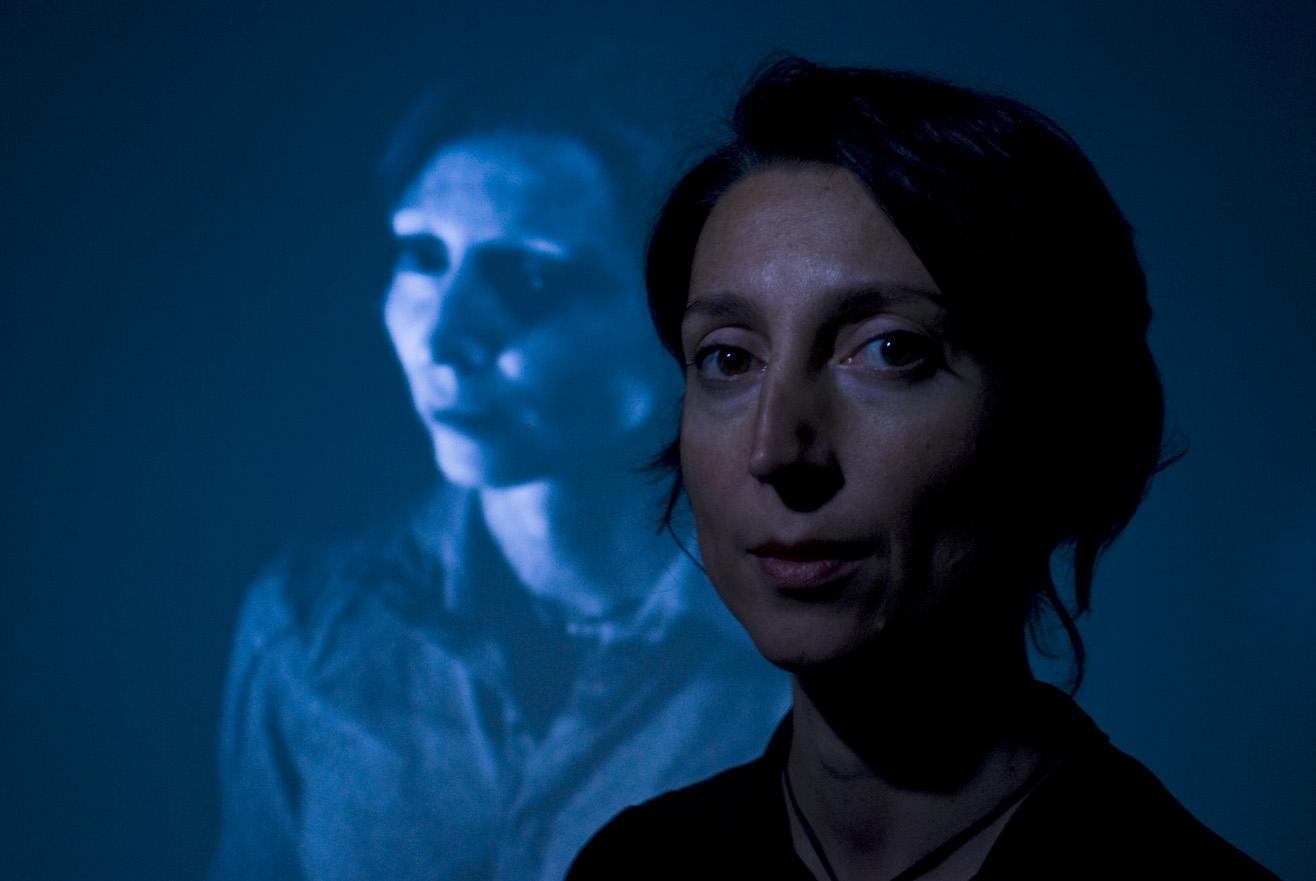
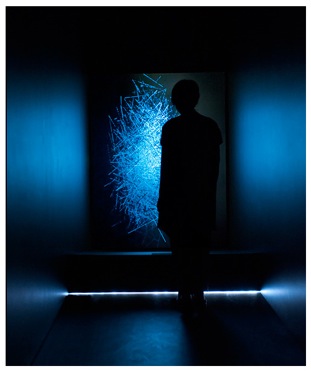
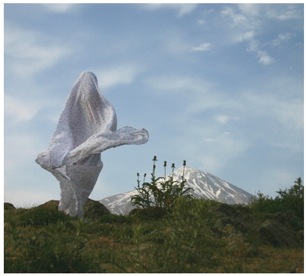
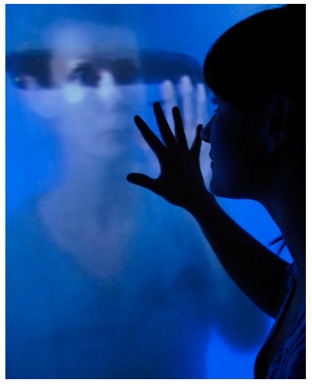

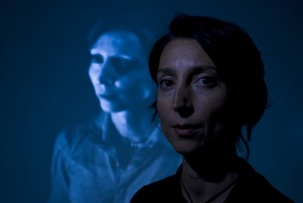
Comments (0)